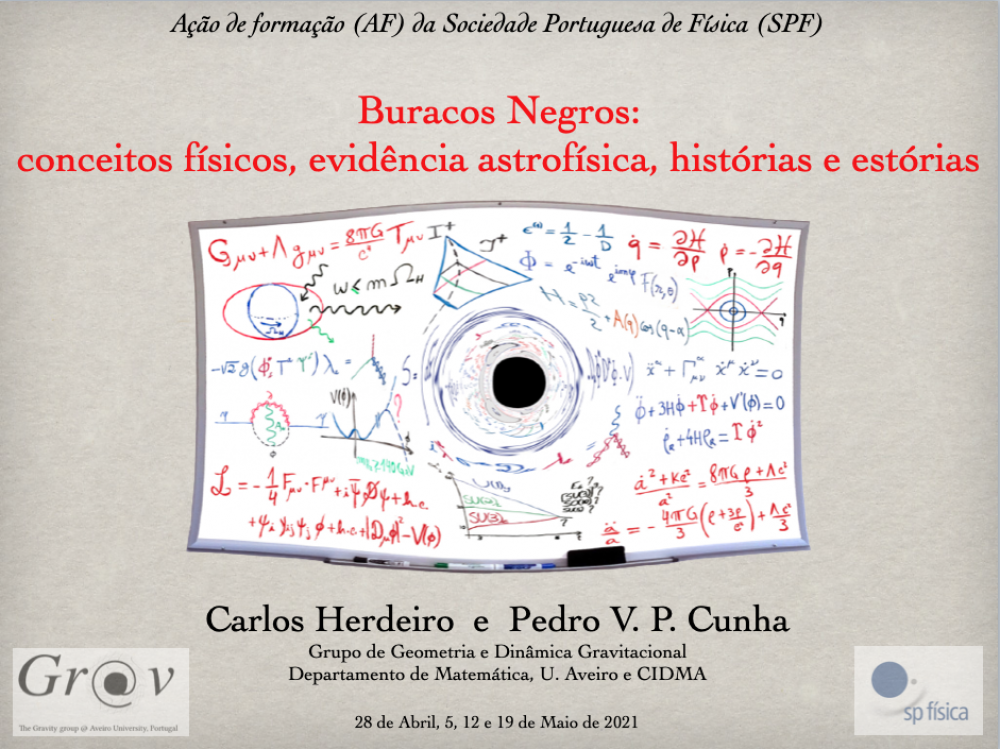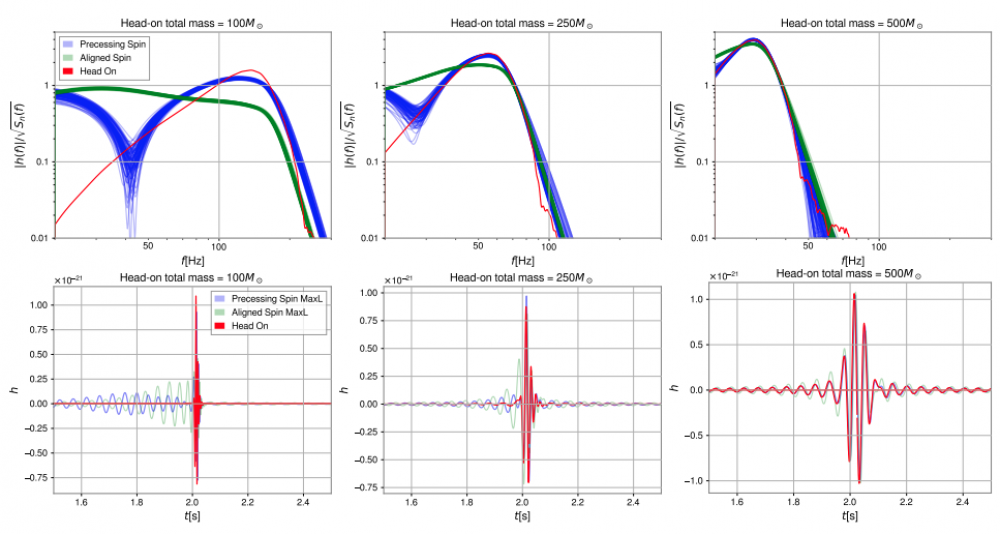Strong Gravity News & Events
The confusing realm of massive black holes
In a paper published in Phys. Rev. Lett, Gr@v member Nico Sanchis-Gual and co-authors reports a degeneracy between the gravitational-wave signals emitted in quasi-circular precessing black-hole mergers and those from extremely eccentric mergers, namely head-on collisions.
A stabilization mechanism for excited fermion-boson stars
Abstract:
Generalizing the Close Limit Approximation
The ability to model the evolution of compact binaries from the inspiral to coalescence is central to gravitational wave astronomy. Current waveform catalogues are built from vacuum binary black hole models, by evolving Einstein equations numerically and complementing them with knowledge from slow-motion expansions.
2 years research fellowship in Strong Gravity
A call for a 2 years research position in Strong Gravity. within the research grant “Testing the Kerr hypothesis with gravitational waves and lensing", PTDC/FIS-AST/3041/2020, is open. The call closes on June 14th 2021.
Testing the nature of black holes with gravitational waves
Abstract: Quantifying the evidence for horizons and understanding the nature of the dark ultracompact objects that populate our Universe are some of the most pressing problems in gravitational physics.
Correspondence of eikonal quasi-normal modes and unstable fundamental photon orbits for Kerr-Newman black hole
Tübingen Einstein Seminar
C. Herdeiro was the invited speaker of the Tübingen Einstein seminar on April 16 2021.
Probing light axion-like particles with neutron star inspirals
Gravitational-wave imprints of non-integrable extreme-mass-ratio inspirals
Abstract: The detection of gravitational waves from extreme-mass-ratio inspirals (EMRIs) with upcoming space-borne detectors will allow for unprecedented tests of general relativity in the strong-field regime. Aside from assessing whether black holes are unequivocally described by the Kerr metric, they may place constraints on the degree of spacetime symmetry.



